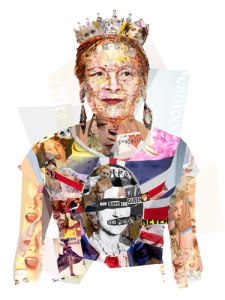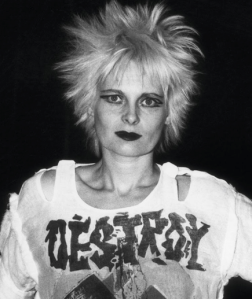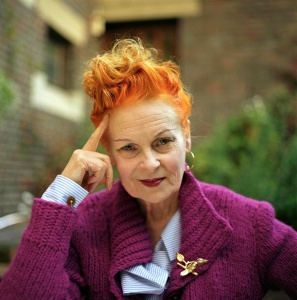
It was Westwood who led the charge to infuse modern fashion with a true sense of modernity, as her passionate advocacy for the so-called “punk” movement spearheaded a sea change in the previously cloistered and refined world of haute couture. Together with rocker husband Malcolm McClaren – who managed the Sex Pistols and designed for the New York Dolls . Westwood brought the punk aesthetic to the forefront of British youth consciousness during the 1970’s, helping to revolutionize an entire generation’s sense of style by synthesizing the rebellious music with clothing and accessories. As noted by a recent exhibit of Westwood’s work compiled by the Metropolitan Museum of Art in New York City, “the punk look has come to be associated with clothing that has been destroyed, has been put back together, is inside out, is unfinished, or is deteriorating … punk was an early manifestation of deconstructionist fashion, which is an important component of late twentieth-century postmodern style.”1 Westwood continually achieved her creative objectives over the span of several decades, transitioning from her punk rock heyday to become a guiding force for modern fashion like television’s Sex and the City, which is why the following explication of her processes and methods is a crucial exercise for contemporary design students.
In the decade between 1971 and 1981 Westwood and McClaren owned and operated a clothing store at 430 King’s Road that, while attached to various names over the years, became legendary within the world of fashion because of Westwood’s innovative and daring designs. As a designer, Westwood’s methodology was immediately defined by her willingness to experiment with an eclectic range of inspirations, and soon after starting her career “she began to research in the National Art Library in the Victoria & Albert Museum, London and found patterns for 18th-century men’s clothing … which formed the basis for the billowing shirt and exaggerated trousers of the colorful, romantic 1981 Pirate collection, their first to be shown on the catwalk.”2 The 1981 Pirate collection represented turning point in Westwood’s career as a designer, demonstrating the potential for innovation available to an artist with a keen eye for historical research, while also confirming that young people are willing to pay homage to past trends provided the clothing is updated with a modern look and feel. As Westwood observes of the Pirate collection, and the working methods which contributed to its lasting success,this period is when she “developed ethnic cutting techniques which are based on rectangles,” and when she learned to “start with an idea she knows will work, knock it up in rough and in small scale and try it out on a little dummy … before arriving at a full scale finished garment in the right fabric through various adjustments and fittings.”3 By continuing to integrate age old techniques and styles within her work, Westwood remains at the forefront of fashion and design to this day, producing fresh clothing for a new generation four decades after becoming punk’s first lady.
_________________________
1.) Shannon Price. Vivienne Westwood (born 1941) and the Postmodern Legacy of Punk Style.” In Heilbrunn Timeline of Art History. New York: The Metropolitan Museum of Art. (2000).
2.) Claire Wilcox. “Vivienne Westwood.” Victoria & Albert Museum. (2004).
3.) Paul Johnston. “The early years: 1981-1987.” – Vivienne Westwood.co.uk. (2014).
GAYA SIRMABIYIK

